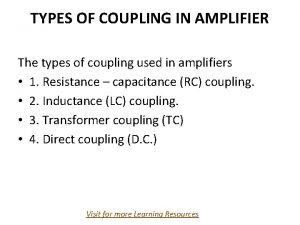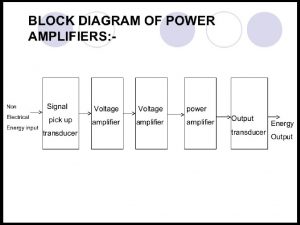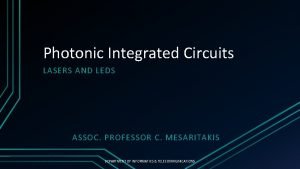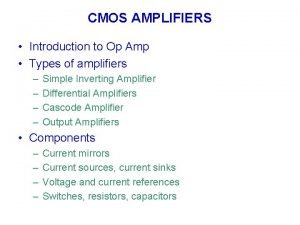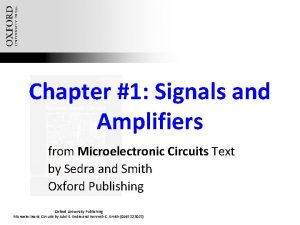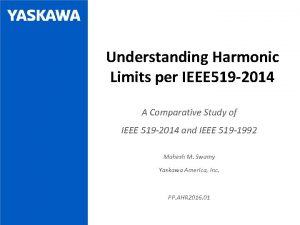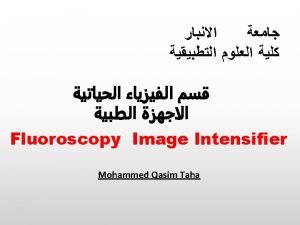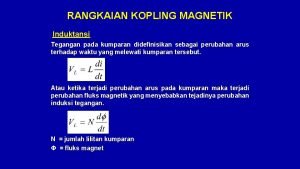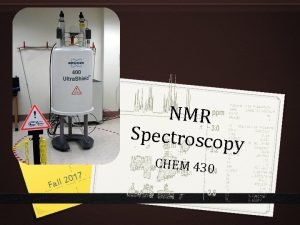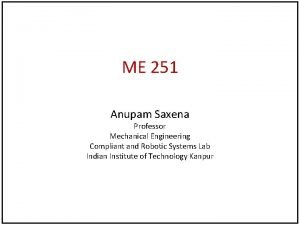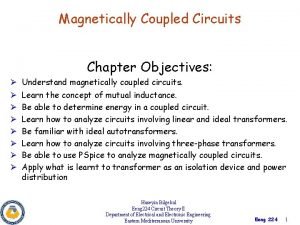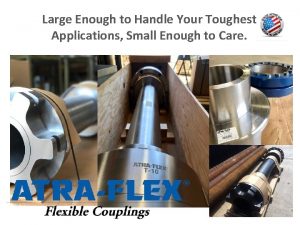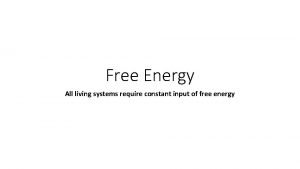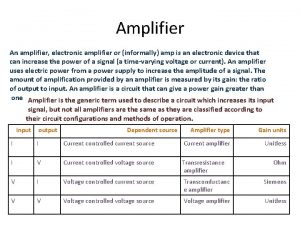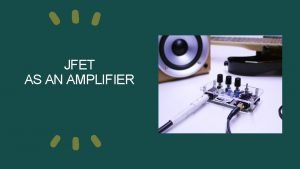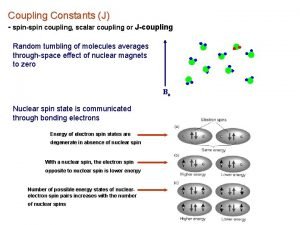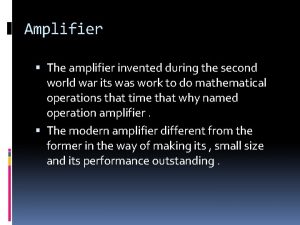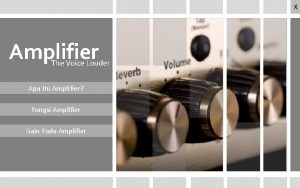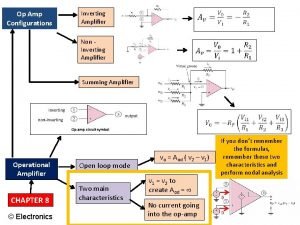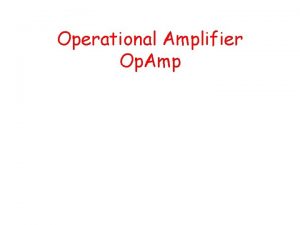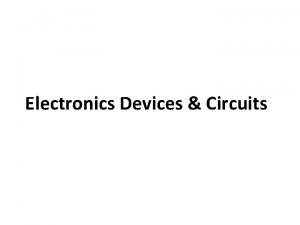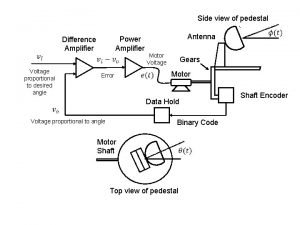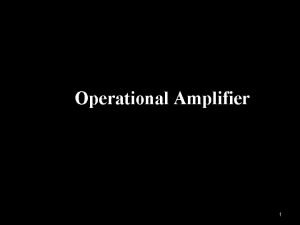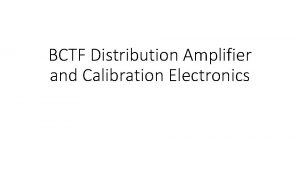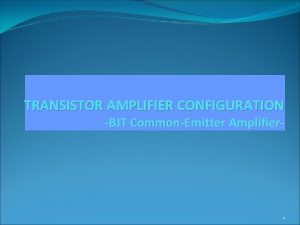TYPES OF COUPLING IN AMPLIFIER The types of
















- Slides: 16

TYPES OF COUPLING IN AMPLIFIER The types of coupling used in amplifiers • 1. Resistance – capacitance (RC) coupling. • 2. Inductance (LC) coupling. • 3. Transformer coupling (TC) • 4. Direct coupling (D. C. ) Visit for more Learning Resources

Two stage transformer coupled amplifier.

Advantages: • Transformer coupling is mostly employed for impedance matching • It is used as final stage. It is used to transfer power to the low impedance lad such as loudspeaker. • For amplification of radio frequency (RF) signal. • In power amplifiers.

single stage CE amplifier

Operation of Single stage CE amplifier • The circuit diagram of a voltage amplifier usingle transistor in CE configuration is shown in figure. It is also known as a small-signal single-stage CE amplifier or RC coupled CE amplifier. It is also known as a voltage amplifier. • The potential divider biasing is provided by resistors R 1, R 2 and RE. • It provides good stabilization of the operating point. The capacitors CC 1 and CC 2 are called the coupling capacitors used to block the AC voltage signals at the input and the output sides. • The capacitor CE works as a bypass capacitor. It bypasses all the AC currents from the emitter to the ground avoids the negative current feedback. It increases the output AC voltage. • The resistance RL represents the resistance of whatever is connected at the output. It may be load resistance or input resistance of the next stage

Types of Coupling in Multistage • In multistage amplifiers, the output signal of preceding stage is to be connected to the input of next stage. • Coupling techniques: 1. R-C coupling 2. Transformer Coupling 3. Direct Coupling

Two stage RC coupled amplifier


Advantages of RC coupled Amplifier 1. Wide frequency response 2. It is most convenient coupling 3. It is inexpensive way of coupling distortion in output is low 4. It is high fidelity amplifier 5. No core distortion

Application 1. 2. 3. 4. 5. In Public Address amplifier system Tape Recorder TV, VCR and CD player Stereo amplifiers RC coupled amplifiers are basically voltage amplifiers

Transformer Coupled Amplifier

Advantages 1. Impedance matching between the stages is possible 2. Higher voltage gain than RC coupled amplifiers 3. DC biasing of individual stages will remain unchanged even after cascading. 1. 2. 3. 4. Disadvantages Coupling transformer is expensive and bulky Frequency response is not perfectly flat There is possibility of core saturation Low frequency due to losses in transformer

Applications 1. For Impedance matching 2. For amplification of radio frequency (RF) signal 3. In power amplifiers 4. For transferring power to low impedance load and such as a loude speaker

Direct coupled amplifier

1. 2. 3. 4. Advantages Due to absence of coupling capacitor, the gain does not reduce on the lower frequency side Wide frequency response This amplifier can amplify even the DC signal Reduced cost and complexity due to absence of coupling capacitor Disadvantages DC biasing conditions of the individual stages do not remain same after cascading Poor frequency response at higher frequencies Output waveform has DC shift Poor temperature stability

Application 1. In operation Amplifiers (OP-AMP) 2. In analog computation 3. In linear Power supplies For more detail contact us
 Transformer coupling is used for amplification
Transformer coupling is used for amplification Power amplifier vs voltage amplifier
Power amplifier vs voltage amplifier Edge emitting laser
Edge emitting laser Types of amplifier
Types of amplifier Types of amplifier
Types of amplifier Point of common coupling (pcc)
Point of common coupling (pcc) Low coupling in software engineering
Low coupling in software engineering Real time fluoroscopy
Real time fluoroscopy Rangkaian kopling transformator
Rangkaian kopling transformator Factors affecting chemical shift in nmr spectroscopy
Factors affecting chemical shift in nmr spectroscopy Geminal and vicinal coupling constants
Geminal and vicinal coupling constants Half lap muff coupling drawing
Half lap muff coupling drawing Magnetic coupled circuits
Magnetic coupled circuits Hereditary units
Hereditary units Atra flex coupling distributors
Atra flex coupling distributors Energy coupling
Energy coupling Expanding stage of family life cycle
Expanding stage of family life cycle
